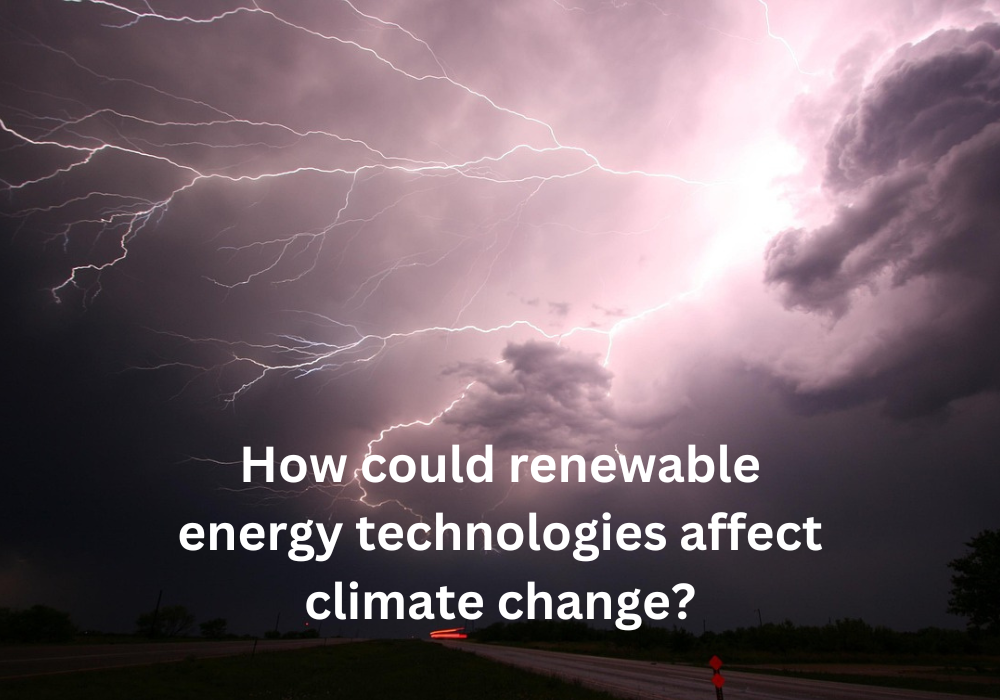Renewable energy sources are crucial to combat climate change since fossil fuels produce harmful greenhouse gases. Wind, solar, hydropower, tidal, geothermal, and biomass are among the most prominent renewable energy sources that might eventually replace traditional fossil fuels. Because they replenish naturally, these renewable energy sources are long-lasting and beneficial to the environment.
To attain net-zero carbon emissions and moderate climate change, power facilities that depend on fossil fuels must be replaced with renewable energy sources like solar and wind. Utilizing technology to capture renewable energy sources reduces air pollution and emissions of greenhouse gases, including carbon dioxide. One nation that has advanced significantly in using renewable energy is the United Kingdom, where 42% of the nation’s power will come from these sources by 2020.
We need devices that employ renewable energy to slow down global warming. Renewable energy sources are more environmentally friendly than fossil fuels since they emit minimal carbon dioxide. Despite its challenges, advances in battery storage and grid modernization technologies make intermittency and storage more straightforward.
In addition to improving the environment and generating employment, renewable energy helps the economy become energy-independent. Technology related to renewable energy is anticipated to play a vital role in assisting the globe to reduce global warming and move toward a low-carbon future. Putting money into infrastructure, innovation, and research on renewable energy might aid nations in the fight against climate change and lead to a cleaner future.
How Renewable Energy Affects Climate Change
By significantly reducing emissions of greenhouse gases, renewable energy technologies, including solar, wind, hydropower, tidal, geothermal, and biomass energy, contribute to the battle against climate change. These renewable energy sources offer sustainable alternatives to fossil fuels, contributing significantly to global warming and environmental degradation.
Solar power generates electricity without contributing to global warming by harnessing the sun’s rays. Solar panels provide solar energy, which is a renewable and environmentally friendly kind of power.
Wind turbines harness the energy of the wind and convert it into electricity without releasing harmful gasses. Reduced reliance on fossil fuels and smaller carbon footprints are both made feasible, in large part, by wind energy.
One renewable energy option that doesn’t contribute to climate change is hydroelectric power plants, which harness the kinetic energy of moving water to generate electricity.
By capturing the energy of the natural ebb and flow of the tides, tidal power produces electricity without contributing to greenhouse gas emissions.
Geothermal power, which harnesses the Earth’s internal heat to generate electricity, is a clean, sustainable energy option that won’t harm the environment.
Biomass energy is generated by burning materials derived from plants or animals as a source of heat or electricity. Biomass energy offers a sustainable alternative to fossil fuels with less carbon effect, while some emissions may occur during production.
The benefits of renewable energy solutions extend well beyond reducing GHG emissions. They help lower energy costs, expand access to power in developing countries, make the system more resilient, and create jobs. Transitioning to renewable energy is essential for achieving zero net carbon emissions and stabilizing climate change.
Countries can significantly reduce their carbon emissions, combat climate change, and build a more sustainable future if they provide resources for the research and implementation of renewable energy technologies and adopt them.
Renewable energy sources are crucial for mitigating the impacts of climate change and lowering carbon dioxide emissions as they provide long-term, environmentally friendly replacements for fossil fuels. In combating climate change, several sources contribute by reducing emissions of greenhouse gases in various ways:
Solar, wind, hydroelectric, geothermal energy, tidal, and biomass power plants produce almost little carbon dioxide when they generate electricity. Renewable energy sources are preferable to fossil fuels, which release significant amounts of greenhouse gases into the air when burned, since they are cleaner and more environmentally friendly.
They could reduce their carbon footprint significantly if they transition from power plants relying on fossil fuels to using renewable energy. One example is substituting renewable energy sources like wind and solar for coal-fired power plants, which produce much more carbon dioxide.
The widespread use of renewable energy sources helps to mitigate climate change by reducing emissions of greenhouse gases. If we want to keep global temperatures from rising and the harmful effects of climate change to a minimum, we must carbon dioxide emissions dioxide.
Biomass and other renewable energy sources have the potential to aid in carbon sequestration. One way to reduce the impact of biomass plants on the environment is to collect and store their carbon dioxide emissions.
The sustainability of renewable energy sources is ensured by their reliance on naturally replenishing resources such as sunlight, wind, water, and heat from the Earth’s core. Renewable energy sources provide clean power that does not deplete natural resources or worsen global warming since it is sustainable.

